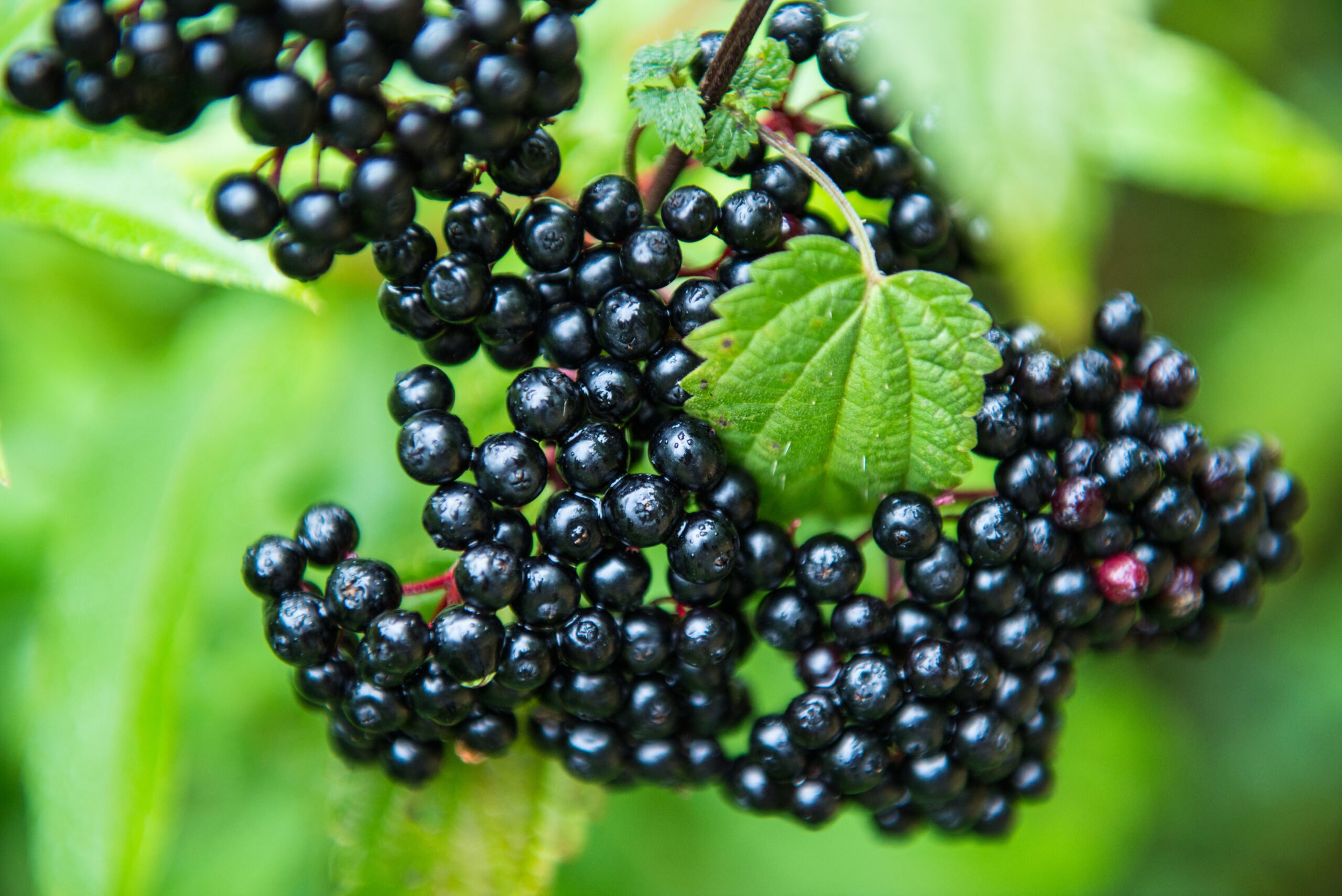Hunting and Fishing News & Blog Articles
Avoid These Toxic Berries That Could Make You Sick
Facebook Twitter Pinterest LinkedIn
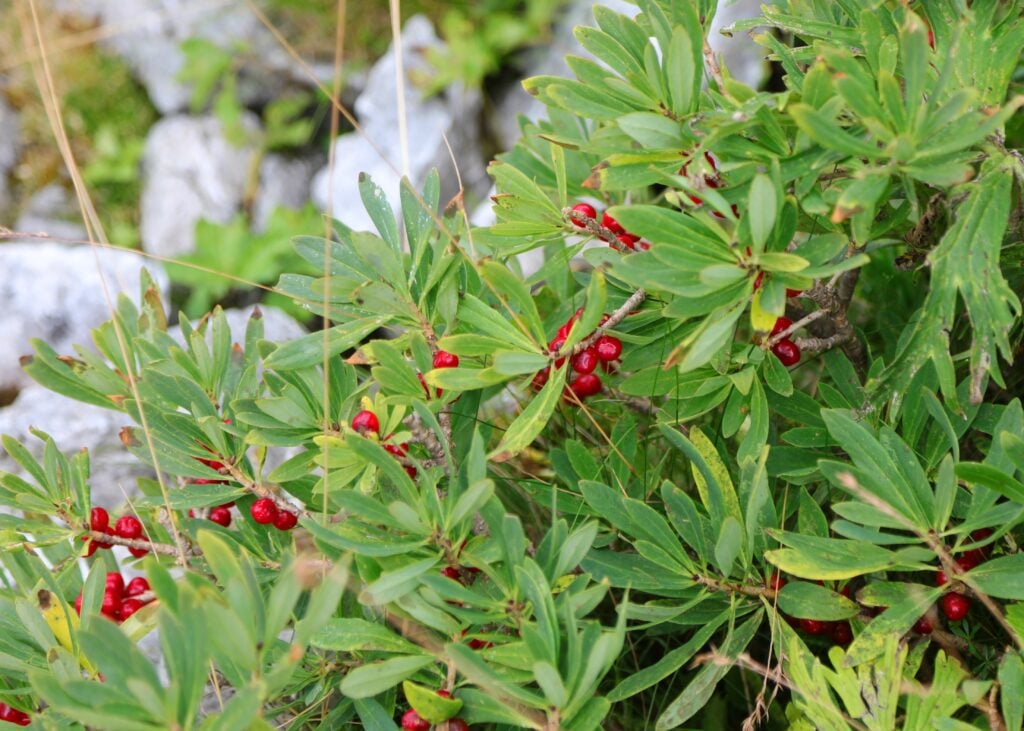
There are so many enjoyable things to experience as an RVer. Camping near toxic berries isn’t one of them.
Get familiar with these plants and berries that don’t sit well with humans or pets–before they cause some very uncomfortable (and potentially dangerous) side effects.
Black Elderberry
Berry description: The Black Elderberry plant produces flat clusters of tiny white flowers that are about ten inches across. These plants grow large leaves and spindling stalks that divide into lots of tiny, purplish berries, almost black in hue. The shrubs can grow up to thirteen feet tall.
Toxic side effects: This berry is delicious and a very potent medicine, but it is potentially toxic when raw. Humans have been poisoned by drinking raw elderberry juice. From raw elderberries, you can get nausea, vomiting, cramps, and diarrhea. The best option to consume this berry is to make sure it is cooked. All other parts of the elderberry plant are still toxic to humans.
Climbing Bittersweet
Berry description: The Climbing Bittersweet is native to the US and Canada but not in the western regions. The plants stand out in the landscapes where they grow because they are bright orange, reddish, berries in an otherwise green and brown environment.
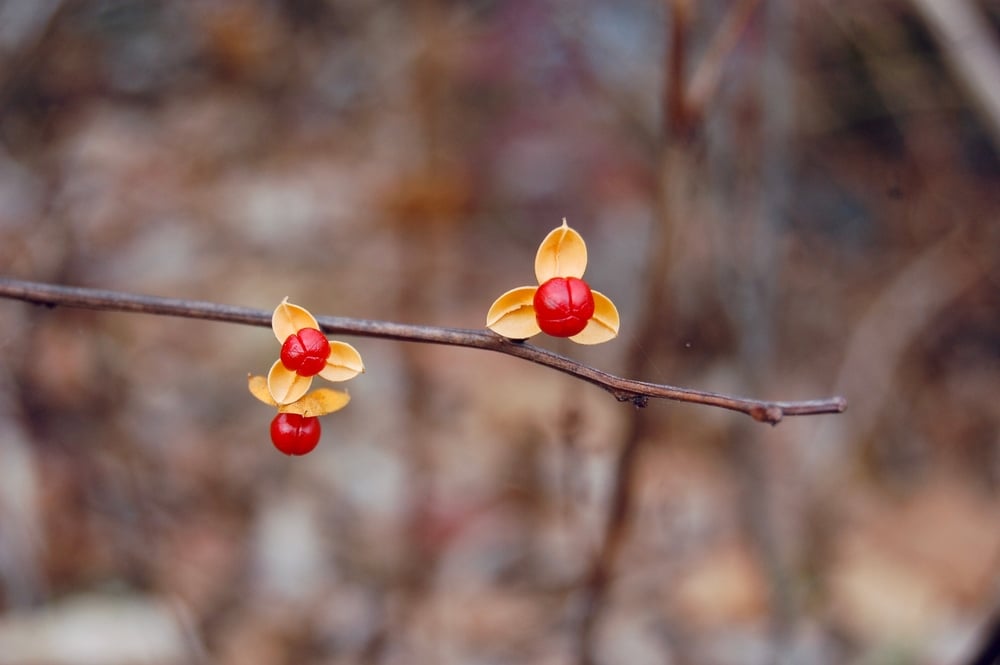
The climbing bittersweet berry plant is not edible.
Toxic side effects: You can experience a scratchy throat, headaches, dizziness, problems speaking, and convulsions. The berries are toxic to humans and can cause vomiting and diarrhea.
Deadly Nightshade
Berry description: You will find this plant primarily along the West Coast of the US, although it has spread to a few of the northeast states. This plant is part of the nightshade family, which also includes chili peppers, eggplants, potatoes, tobacco, and tomatoes. Tomatoes were once thought to be poisonous. The Deadly Nightshade has a tubular-shaped flower that produces black, lavender, and purple berries.
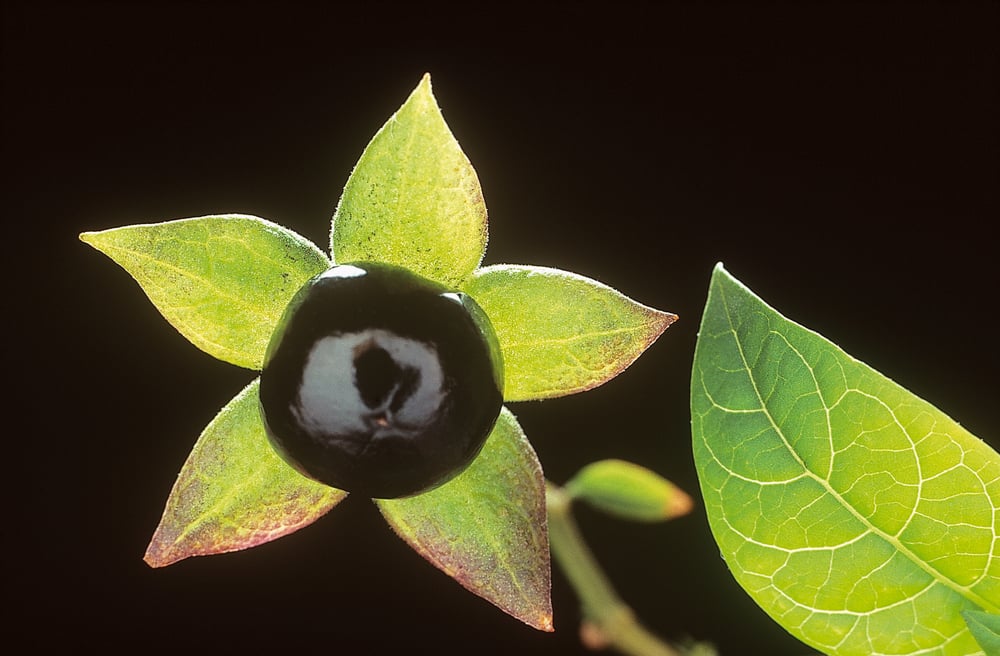
They call it deadly nightshade for a reason
Toxic side effects: The berries have a sweet taste, which makes it very dangerous. There are no bitter or burning tastes to make you stop eating them. Eating only two to five berries can kill an adult human. Symptoms include blurred vision, confusion, convulsions, dizziness, drowsiness, dry mouth, headaches, hallucinations, sensitivity to light, stumbling, and vertigo.
Red Baneberry
Berry description: The Red Baneberry grows throughout the US and Canada in the spring. It develops as a bush that grows up to five feet tall. You can identify it by the long roots, feathery leaves, and fuzzy underside with ragged-edged leaves. It has small, fragrant white flowers that appear on it in late spring and early summer. At the end of summer, those flowers turn into clusters of red berries.
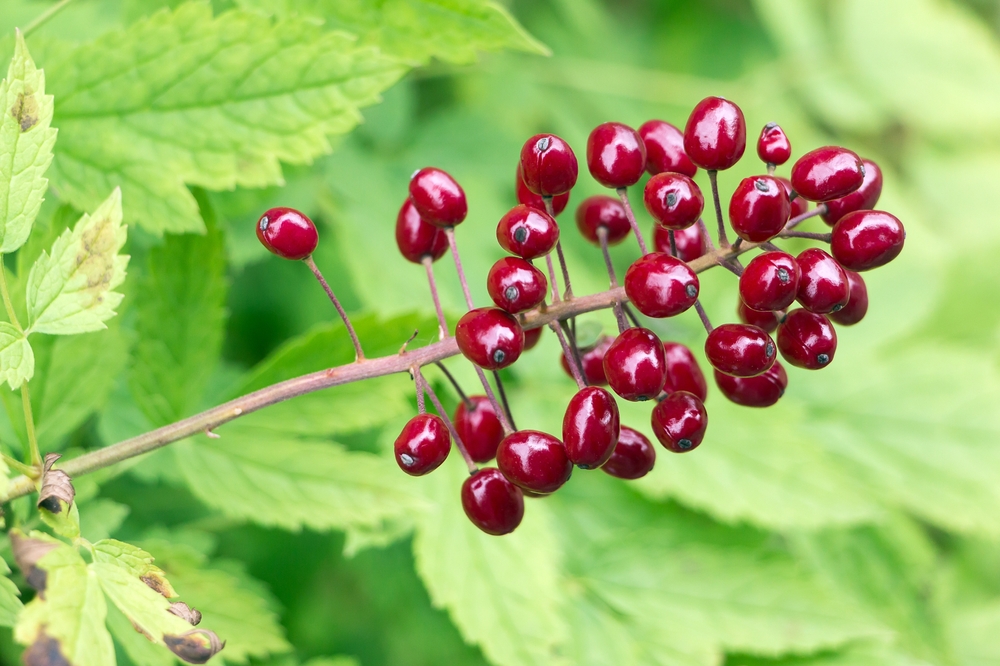
Just one red baneberry is toxic
Toxic side effects: The most common side effects are dizziness, stomach cramps, headaches, vomiting, and diarrhea. It is believed that eating only six berries may lead to respiratory distress or cardiac arrest. Eating only one berry will leave your mouth and throat burning.
Rock Cotoneaster
Berry description: This plant grows in more than half the US states—mostly central states, the lower southern states, and in the New England area. The Rock Cotoneaster is a shrub but can grow as tall as twenty-five feet. It has roundish, glossy, green leaves that turn bright red and orange in the fall. In the spring, pink flowers grow on the shrub. The flowers turn into yellow berries, then scarlet colors.
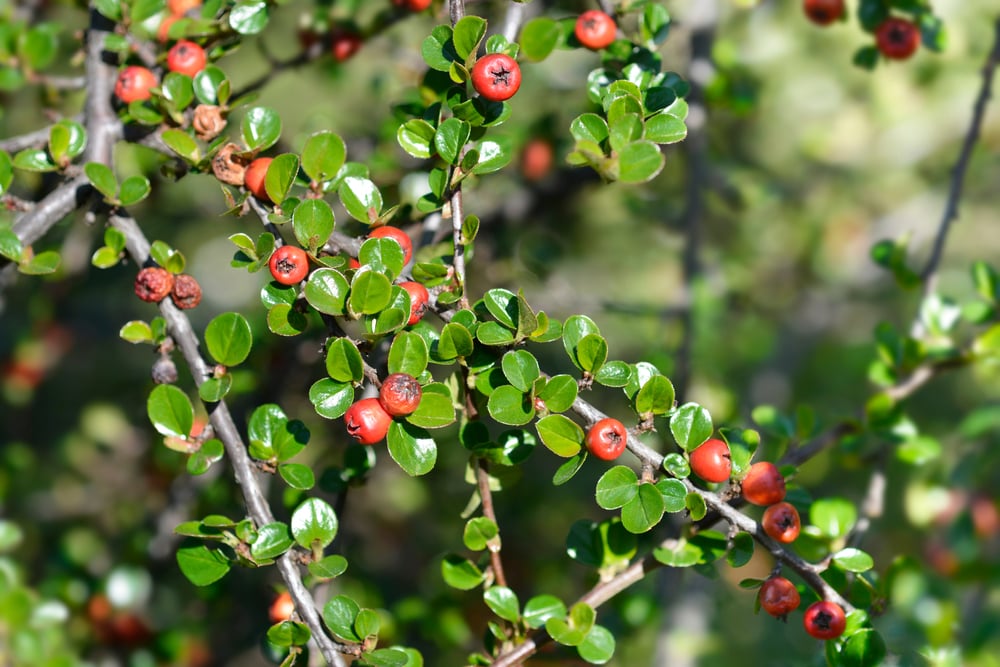
The rock cotoneaster is toxic to your heart, liver, kidney, and brain.
Toxic side effects: This berry can affect your heart, liver, kidney, and brain. The digestion process turns the berry into a cyanide poisoning. However, you will need to consume a large amount of these berries to be at risk for side effects.
Watch for poisonous berry look-alikes
Being an RVing foodie is one of the things I enjoy most. Going to different locations and trying the local foods is a hobby. Eating local and enjoying edible wild plants and flowers has been a growing experience.
One of the greatest issues with consuming local plants and berries is they have copycats. Some are edible and completely benign, while others are toxic and deadly. These berries can look very similar to each other. The other problem with consuming wild berries and plants is they appear to be safe because local wildlife consumes them with no issues. Most of these berries listed here are safely consumed by birds with no side effects. To top it off, the berries are bright, colorful, and look appealing to eat. They are alluring.
It is highly recommended when deciding what berries or plants to enjoy that you defer to experts—especially when so many toxic berry plants only need one or two berries to accomplish their purpose.
Get more tips on RVing
One of the best parts about RVing is engaging with the community of traveling enthusiasts. iRV2 forums allow folks to chat with other RVers online, and get other perspectives on everything RVing, including products, destinations, RV mods, and more.
Related articles:
Avoid These 10 Dangerous Routes In Your Big RigThe 6 Best Types Of Houseplants To Grow In An RV
Facebook Twitter Pinterest LinkedIn
The post Avoid These Toxic Berries That Could Make You Sick appeared first on RV LIFE.

